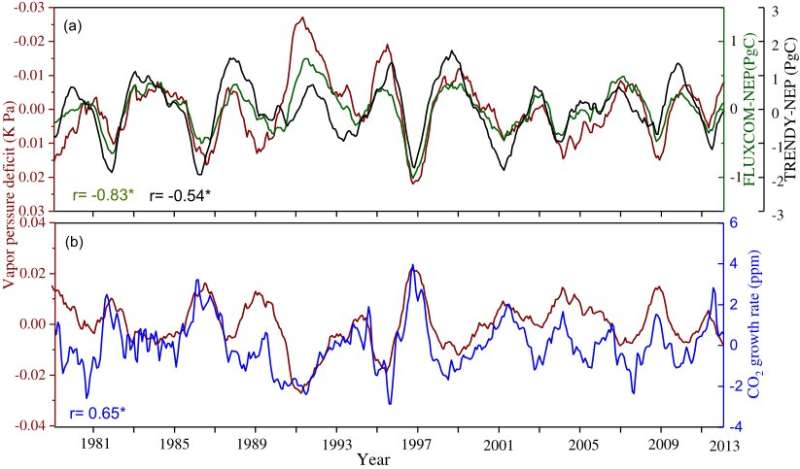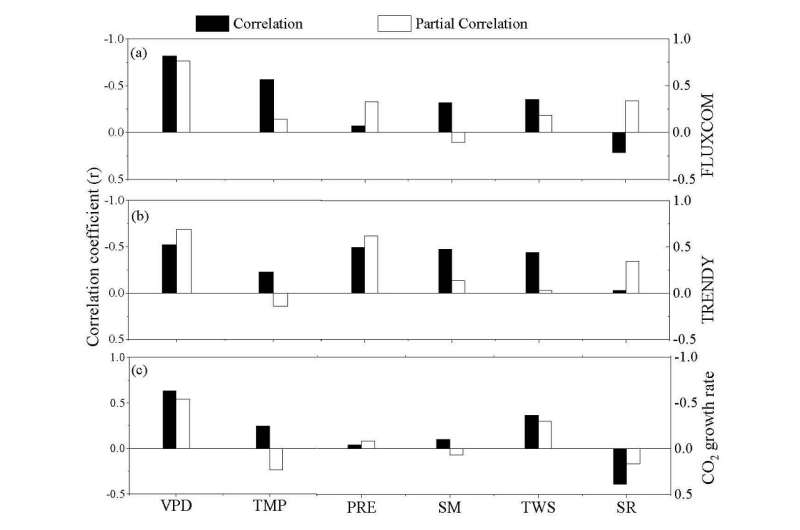The underestimated impact of vapor pressure deficit on terrestrial carbon cycle

This study is led by Dr. Bin He (College of Global Change and Earth System Science, Beijing Normal University) and Dr. Wenping Yuan (School of Atmospheric Sciences, Sun Yat-sen University). Terrestrial ecosystem, as a major carbon sink, plays an important role in regulating the global carbon cycle and atmospheric CO2 mixing ratio. Traditionally, atmospheric temperature or land water availability have been considered as the two dominant drivers of interannual variability of global terrestrial carbon sink. In 2019, Wenping Yuan's group observed an apparent shift in global vegetation growth from greening to browning in the 1990s, and attributed this shift to the sharp increase in vapor pressure deficit (VPD). Inspired by this study, Bin He proposed that VPD should regulate the global terrestrial carbon cycle to a significant extent, which has been ignored by previous studies. "When I found the strong correlation between VPD and atmospheric CO2 growth rate, and the latter is an integrated measurement of global land carbon sink, I realized this finding may bring a completely new research objective in the field of global carbon cycle and climate change" Bin He says.
Bin He immediately contract with Wenping Yuan and discussed this idea with him. "This is exciting, but more evidences are needed to test this speculation," Wenping Yuan said. The two groups cooperated and conducted a large amount of data analysis. They explored the impact of VPD on terrestrial ecosystem productivity observed by satellite remote sensing and terrestrial carbon fluxes from independent modeling approaches. Finally, they confirmed the significant impact of VPD on global terrestrial carbon cycle. "Our original proposal turned out to be true," Bin He says.
Future climate change, especially the increase of global atmospheric temperature, will promote VPD consistently. A greater regulation of VPD on terrestrial ecosystem productivity can be expected. "However, current Earth system models underestimate the interannual variability in VPD and its impacts on global terrestrial productivity, preventing a reasonable projection of future global carbon cycle. Our finding is critical for the improvement of Earth system model," Bin He says.

The research was published in National Science Review.
More information: Bin He et al, Worldwide impacts of atmospheric vapor pressure deficit on the interannual variability of terrestrial carbon sinks, National Science Review (2021). DOI: 10.1093/nsr/nwab150
Provided by Science China Press




















